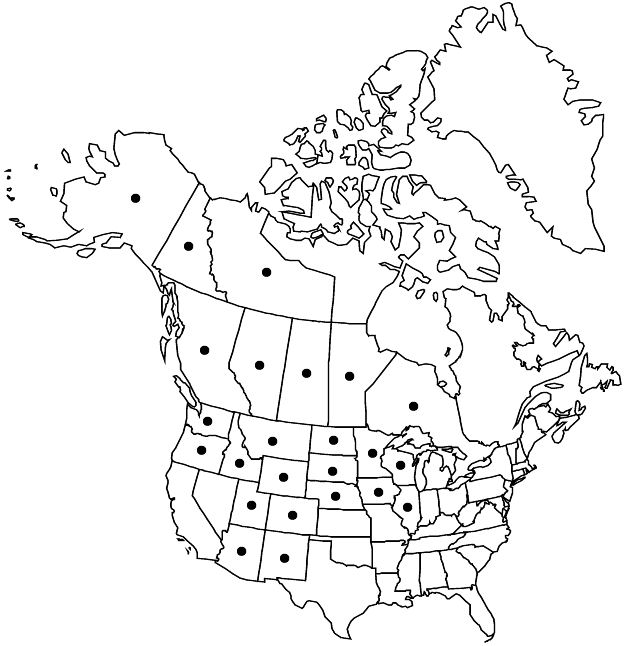Viola canadensis var. rugulosa
in C. L. Hitchcock et al., Vasc. Pl. Pacif. N.W. 3: 442. 1961.
Plants forming colonies, 10–40 (–60) cm. Rhizomes branched. Stems 1–3 (–4). Leaves: basal: petiole 4.1–23 cm; blade broadly ovate to ovate-reniform, 1.9–12.4 × 2.1–11.1 (–12.3) cm, base cordate, margins crenate, sometimes serrulate proximally; cauline: stipules lanceolate to deltate, margins entire to laciniate, apex acuminate; petiole 0.2–6.9 (–15.2) cm; blade ovate, 2.9–7.7 × 1.8–7.8 cm, base cordate to ± truncate, margins crenate to ± serrulate, ciliate. Peduncles 1.2–5 cm. Flowers: lowest petal 10–20 mm; cleistogamous flowers sometimes absent. Capsules 6–10 mm, sometimes muriculate. 2n = 24.
Phenology: Flowering May–Aug.
Habitat: Shady areas, woodlands, forest edges, thickets, riparian corridors
Elevation: 300–2600 m
Distribution

Alta., B.C., Man., N.W.T., Ont., Sask., Yukon, Alaska, Ariz., Colo., Idaho, Ill., Iowa, Minn., Mont., Nebr., N.Mex., N.Dak., Oreg., S.Dak., Utah, Wash., Wis., Wyo.
Discussion
Viola discurrens is cited here in synonymy because in his original description, based on a plant from Tennessee, Greene reported that it forms somewhat extensive colonies by a system of loosely connected, slender, horizontal whitish rootstocks. Subsequent authors have referred to these structures as stoloniferous rhizomes, superficial rhizomes, runners, or stolons. Greene based his description of V. rugulosa on a plant collected in Minnesota stating that it had a thick, suberect rootstock, but did not say that it had stolons, whitish rootstalks, or stoloniferous rhizomes or that it formed colonies. It is unclear why E. Brainerd (1921) dismissed V. discurrens as an “unsatisfactory segregate” and instead assumed that colony-forming plants interconnected by subterranean, branching rhizomes should be termed V. rugulosa instead of V. discurrens. Most authors have followed Brainerd’s lead. W. J. Cody (2000) applied the name V. canadensis var. rydbergii (Greene) House to rhizomatous V. canadensis plants in Yukon; when Greene described V. rydbergii, he did not mention rhizomes as he did for V. discurrens.
V. B. Baird (1942) stated that V. rugulosa lacks cleistogamous flowers; R. E. Brooks and R. L. McGregor (1986) noted that cleistogamous flowers are borne for a short time in axils of distal leaves.
Selected References
None.
Lower Taxa
"thick" is not a number. "narrow" is not a number.